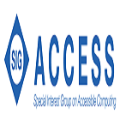Globalization in the semiconductor industry enables fabless design houses to reduce their costs, save time, and make use of newer technologies. However, the offshoring of Integrated Circuit (IC) fabrication has negative sides, including threats such as Hardware Trojans (HTs) - a type of malicious logic that is not trivial to detect. One aspect of IC design that is not affected by globalization is the need for thorough verification. Verification engineers devise complex assets to make sure designs are bug-free, including assertions. This knowledge is typically not reused once verification is over. The premise of this paper is that verification assets that already exist can be turned into effective security checkers for HT detection. For this purpose, we show how assertions can be used as online monitors. To this end, we propose a security metric and an assertion selection flow that leverages Cadence JasperGold Security Path Verification (SPV). The experimental results show that our approach scales for industry-size circuits by analyzing more than 100 assertions for different Intellectual Properties (IPs) of the OpenTitan System-on-Chip (SoC). Moreover, our detection solution is pragmatic since it does not rely on the HT activation mechanism.
翻译:半导体工业的全球化使得设计设计室能够降低成本、节省时间和利用新技术。然而,综合电路制造的离岸外包具有消极面,包括硬软件Trojans(HTs)等威胁,这种恶意逻辑并非微不足道,需要检测。IC设计的一个不受全球化影响的方面是需要彻底核查。核查工程师设计了复杂的资产,以确保设计没有错误,包括断言。一旦核查结束,这种知识通常不会再利用。本文的前提是,已经存在的核查资产可以转化为有效的安全检查器,用于HT检测。为此,我们展示了如何将断言用作在线监测器。为此,我们提出了一个安全指标和选择数据流,利用Cadence JustoGold安全路径核查(SPV) 。实验结果显示,我们通过分析OpenTitan系统(SOC)不同知识产权的100多种数据,对工业规模电路进行了规模分析。此外,我们的探测解决方案是务实的,因为它并不依赖HT的激活机制。




